Archive for October, 2009
All fermented… almost
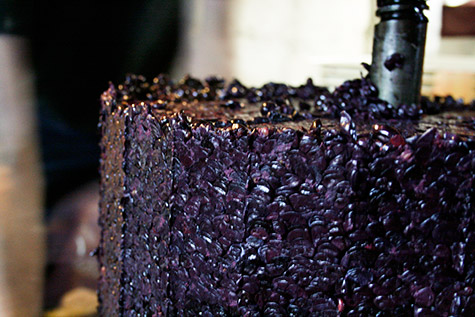 As we threatened in a previous post, we partially pressed the Cabernet Sauvignon last night, putting approximately 2/3 of the must into barrel and the rest into the variable height tank for 3 weeks of solitary. I think this is the farthest we’ve ever taken a wine before pressing — no cap to speak of, indicating the yeasts had truly left the building. I thought it tasted great.
As we threatened in a previous post, we partially pressed the Cabernet Sauvignon last night, putting approximately 2/3 of the must into barrel and the rest into the variable height tank for 3 weeks of solitary. I think this is the farthest we’ve ever taken a wine before pressing — no cap to speak of, indicating the yeasts had truly left the building. I thought it tasted great.
What went into the barrel was essentially all “free-run” — we didn’t actually squeeze the grapes, but poured stuff in the top of the open press, letting it percolate through the staves into a waiting bucket below, leaving grape skins and seeds behind. Because the wine becomes a lot more tannic once you start pressing (the tannin comes from the skins and seeds, after all), it’ll be interesting to see how this free run juice evolves. More interesting, of course, will be how the extended maceration changes the Cab — assuming we don’t f*** it up, that is.
And so we bid a fond farewell to the ferments of 2009: Merlot, Syrah, Pinot Noir, Rosé, Cab Franc, Cab Sauv and Pinot Gris (in that order), payload violently spent but safely past the upper atmosphere, now nestling into the vessels in which they’ll contentedly snore through winter and malolactic fermentation (a secondary fermentation that changes malic acid in the wine to softer lactic acid).
So with a tear in our eye, we cast our eye back over the good times and say goodbye to
спалниWAIT! No! [here he breaks down and sobs, smacking his arm to bring up a vein] It can’t be over already?! Please? One more ride on the sweet, fragrant roller-coaster of fermentation? Please?
And as luck and the infinite durability of yeasts would have it, that’s exactly what we’re doing. Like wild-eyed Wall Street brokers who can’t leave the thrill of derivatives alone, we’re going back to the market for one more ferment, baby! All it takes is the spent “cake” from the Cabernet Franc and Cabernet Sauvignon pressings, a dentist’s nightmare worth of sugar and a small ocean of water and the yeasts will take up right where they left off.
It’s a so-called “second wine,” and a chance to fill the house with perfume again. But if it doesn’t work, you’ll bail us out again, won’t you?
No commentsShooting the Moon
Normally, once the yeasts have consumed all the sugar in a must, they stop producing alcohol and CO2, and as a consequence, you lose a protective layer of gas on top of the wine that helps inhibit bad bacteria from colonizing your wine. So, when the “cap falls” — when there’s no longer CO2 pushing the skins to the surface, it’s time to press, if not before.
Now, if you’re feeling lucky, or if you have a way to float additional CO2 on top, you can certainly leave it be for a bit. Presumably, what you’ll get is even more stuffing from the skins and seeds, so if you like your wines tannic, this could be a way to go. The trouble is that the skins and seeds are now soaking in 14% alcohol, so not only will you get more flavor from the skins, the alcohol will act as a solvent, leaching more bitter, mouth-drying tannins from the seeds.
So because we’re not looking for the taste of the Home Depot lumber yard in our wines, we’ve always pressed just before the cap falls, ensuring along the way more healthy wines.
Some winemakers, however, are not so leery, and in fact, shoot the moon with a process called “extended maceration” — rather than pressing when the cap falls, they seal the wine up in tanks, protected by CO2, and leave it soaking for as much as a month and a half. Yes, you read that right: 45 days.
So this year, throwing caution to the wind, we’re going to try it ourselves. How will this mad gamble work? And why would we want our wine to evoke the subtle flavor of a 2×4? Find out below…
Read more
Three down
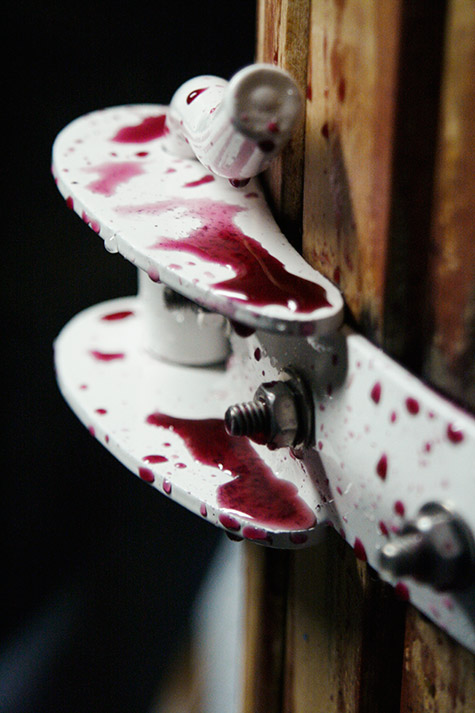 With the Pinot Noir now safely in carboys, the Franc ready to press tonight or tomorrow night, and the Cab nearly ready itself, Crush 2009 is starting to wind down. After the sound of rioting yeasts bubbling through wine all through the basement, the lower volume of finishing ferments is a little sad, like a sparsely populated dance floor at the end of a party.
With the Pinot Noir now safely in carboys, the Franc ready to press tonight or tomorrow night, and the Cab nearly ready itself, Crush 2009 is starting to wind down. After the sound of rioting yeasts bubbling through wine all through the basement, the lower volume of finishing ferments is a little sad, like a sparsely populated dance floor at the end of a party.
But the light fantastic isn’t fully tripped yet. As I mentioned, the Franc is now weakly mustering a cap, a sign (along with hydrometer readings) it’s pretty much done and ready for the press. It smells terrific, like cran-raspberry flowers, if such a thing exists. We’ll probably press it tonight, from the looks of the sign-up sheet we’ve been using via Doodle.
Next is the Cabernet Sauvignon. It’s close to done itself, but I want to experiment with a short “extended maceration” on this big-shouldered wine, pulling more flavor and more tannin into it. Some wineries leave their wines to soak for more than a month after fermentation is finished, which contrary to what you’d think supposedly coaxes round, soft tannins from the skins. That requires better equipment that we have, since you really need to seal off the wine against the ravages of oxygen, now that the yeast is no longer producing a blanket of CO2 to protect the surface. But we’ll seal it as best we can and keep an eagle eye on it, pressing before anything heads precipitously south.
No commentsI’m blown away
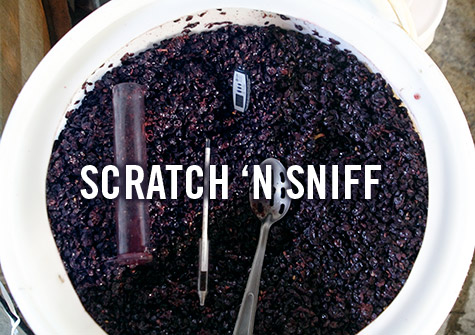
That’s right, go ahead. No one’s looking: scratch the screen. Doesn’t that Pinot Noir smell incredible? Good god!
For those of you with older monitors, let me try to describe what it smells like. First, I should say I’ve made Pinot Noir before, and I’ve loved the wine for years. I was even on the Board of the International Pinot Noir Celebration for a while. So I understand why people like it, and I’ve smelled my share of it, during and well after fermentation.
But I don’t think I really understood how it can become an addiction, something winemakers throw their entire lives into, until this began to overwhelm my senses. Holy shit: this is ambrosial.
Some of it is surely how much is packed into this fragrance: ripe cherries, but not just cherries; their delicate stems, the branches holding them, a light breeze gently riffling them on a warm fall afternoon, coaxing out the fragrance of the entire orchard you kick up a little earth walking beneath. There’s tea, maybe a pekoe; and roses, a mixed garden of them, and along with a nearby raspberry bramble, warmed by the sun and transported on the air. And there’s something darker, richer, more earthy, maybe some tobacco, and a whiff of lavender bees are happily hovering through.
But what really takes it past a mere perfume counter it is the balance of all these fragrances, which play in and out of one another like the honey bees I just mentioned, their gentle buzzing, like the CO2 wafting above the cap, adding yet another sensory layer and sharpening the whole experience just so.
Incredible. Think there’s any way we can bottle this? Oh… right!
No commentsOne down, six to go
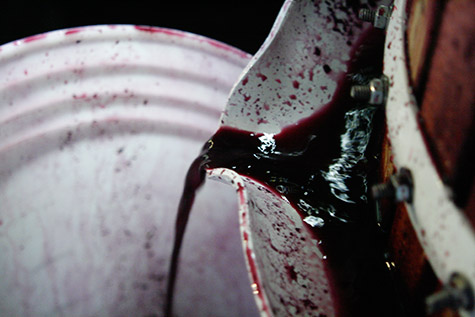 Last night we pressed the Syrah, sending it barreling toward French oak and malolactic fermentation. It was the first red to finish this year, and the first real test of our reconditioned wine press, so we weren’t totally sure what would come out the other end.
Last night we pressed the Syrah, sending it barreling toward French oak and malolactic fermentation. It was the first red to finish this year, and the first real test of our reconditioned wine press, so we weren’t totally sure what would come out the other end.
Luckily, what emerged was an inky purple blacksmith of a wine, burly but agile, if not kryptonite for any white garments or pearly teeth nearby. As we loaded it into the press, it filled the basement with an enthralling animal, dark-berry fragrance, and as it cascaded off the trough into the bucket, it tasted full and juicy through the mid and beyond. Wow.
(All images for this post courtesy of our guest photographer, Layla Grice) Read more
1 commentga-Gris-gistes
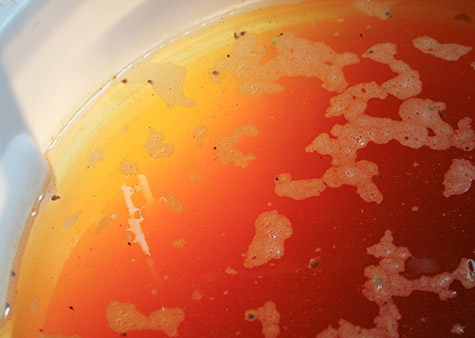 For the first time in a dozen years, a white wine is brightening the basement: Pinot Gris from Oracle Vineyard in the Dundee Hills. After pressing and letting it settle for a day, I took a halogen shop light and lit the side of the fermenter to see where the lees-line was (“lees” being the skunge the precipitates out of a wine after fermentation). Man, bask in that warm, golden color: I plan to bring this photo up every time I need a hit of vitamin D through the long, dark Oregon winter.
For the first time in a dozen years, a white wine is brightening the basement: Pinot Gris from Oracle Vineyard in the Dundee Hills. After pressing and letting it settle for a day, I took a halogen shop light and lit the side of the fermenter to see where the lees-line was (“lees” being the skunge the precipitates out of a wine after fermentation). Man, bask in that warm, golden color: I plan to bring this photo up every time I need a hit of vitamin D through the long, dark Oregon winter.
Dawdling Merlot
I’m a little worried about our Merlot, which now appears to be on its hands and knees crawling toward the completion of fermentation.
It’s generally gone through a longer, cooler ferment to (perhaps) retain more of its fruity essence, peaking in the low 70s early on in the ferment. So I suppose you could say it never got a head of steam, and now there’s little momentum to carry the yeasts through the fog of alcohol they’ve created by consuming all that sugar. In addition, wild yeasts got this party started, so there’s no guarantee we have sturdy specimens in there to grab the reins and save the day.
So this afternoon, I zipped home to wrap both fermenters in an electric, heated mattress pad, to see if a little temperature will coax the yeasts out of their stupor. If I haven’t waited too long already, I’m reasonably confident that will work, but if it doesn’t, we’ll have to beg some crude, tough-guy yeasts to finish the job. Their specialty isn’t subtlety, but we’ll be in no position to argue.
No comments